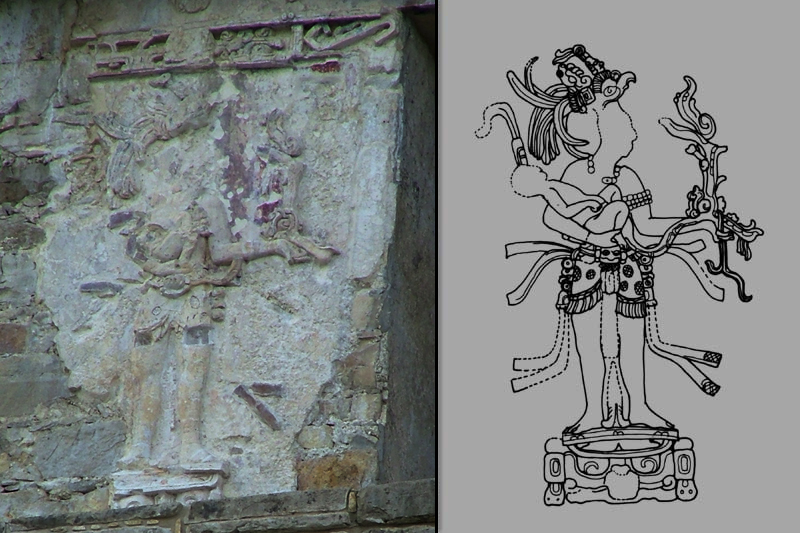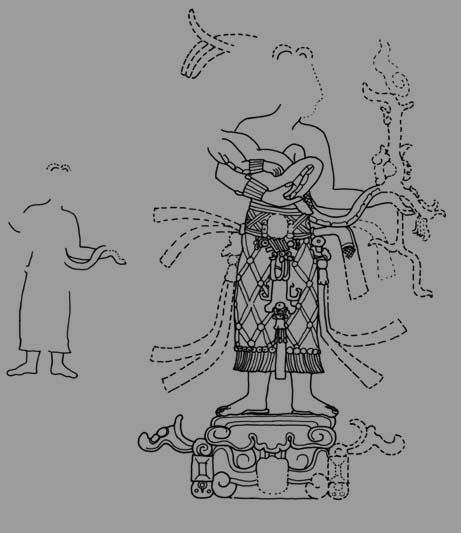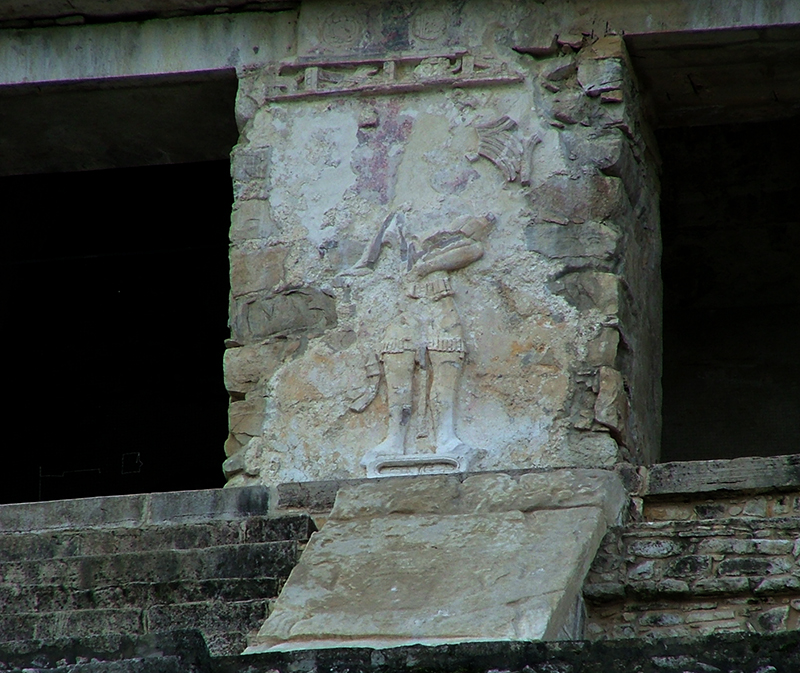

Pier B showing the dynastic founder presenting Kan-Balam to the people
"The figures on the four middle piers represent ancestors standing in the Otherworld as they present the child to the people of Palenque, but which ancestors are they? On pier b, the quetzal bird and jaguar muzzle in the headdress name K'uk'-Balam (Quetzal-Jaguar), the founder of Palenque's dynasty."
Schele & Mathews, The Code of Kings, p. 99
Drawing by Linda Schele, © David Schele, courtesy Foundation for the Advancement of Mesoamerican Studies, Inc., http://www.famsi.org
NOTE: The symbols of divinity used in the portrayal of the infant Kan-Balam link the baby to the divine K'awil. These include the flaming ax of K'awil on the baby's forehead as well as his leg transforming into a serpent.

Pier C showing Kan-Balam's mother presenting Kan-Balam to the people
"The two center figures cannot be identified with certainty, but since they wear the net skirts of First Father and First Mother, we suspect they are the parents of the child, Hanab-Pakal and Lady Tz'ak-Ahaw [shown here]. These figures, then, represent the child's most significant ancestors – his parents, his namesake, the dynasty founder – materialized at the heir-designation so that they could present the child Kan-Balam to the public. These rituals began on June 17, 641, and culminated four days later on the summer solstice."
Schele & Mathews, The Code of Kings, p. 99-100.
Drawing by Linda Schele, © David Schele, courtesy Foundation for the Advancement of Mesoamerican Studies, Inc., http://www.famsi.org

Pier D showing Pakal the Great presenting Kan-Balam to the people
Pier D shows Pakal the Great presenting his heir Kan-Balam to the people of Palenque. Pakal wears the net skirt of First Father.

Pier E showing Kan-Balam I presenting Kan-Balam to the people
On Pier E, a jaguar helmet [a] with snake teeth designates Kan-Balam I, the great-great-grandfather and namesake of the child.
Schele & Mathews, The Code of Kings, p. 99
NOTE: The base of Pier E is shown in b. When we were in Palenque in January of 2004 the Temple of the Inscriptions was closed, so all these photos were taken with high optical zoom from below in the plaza and therefore cannot show the pedestals on which the figures stand.